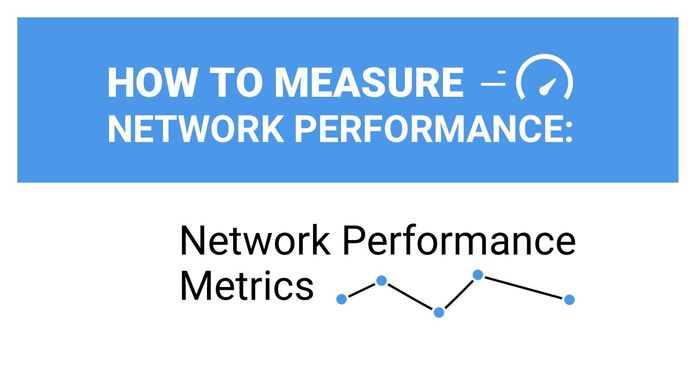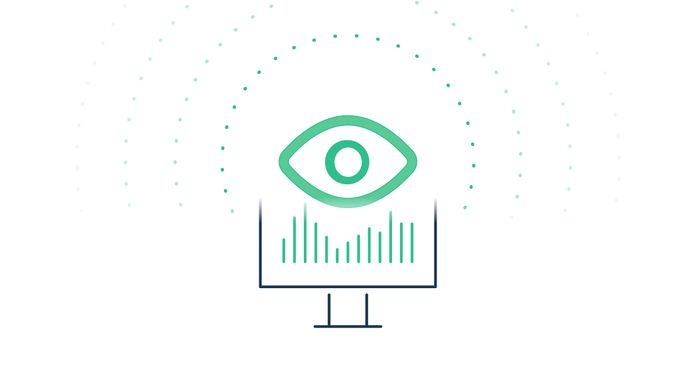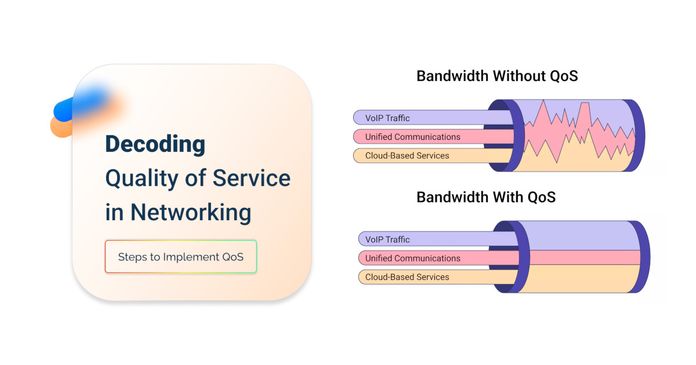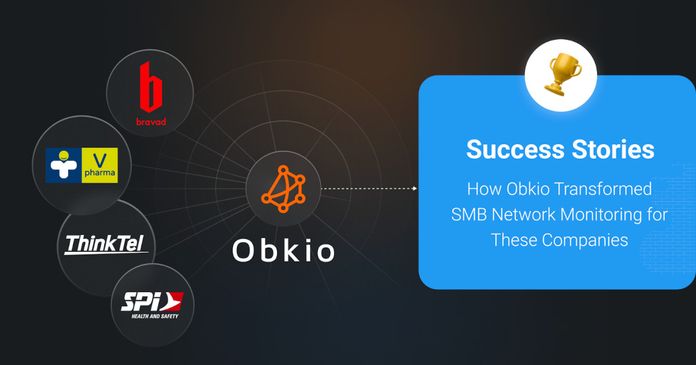Table of Contents
Table of Contents
Users expect seamless and reliable network performance, and any disruption or degradation can significantly impact their satisfaction, productivity, and even the success of the business itself. Therefore, it has become crucial for organizations to shift their focus towards user-centricity in network monitoring, ensuring that the end-user's network experience is at the forefront of their operations.
This article explores the vital role of end-user network experience monitoring in mastering user-centricity. We will delve into the definition of end-user network experience, the limitations of traditional network monitoring approaches, and the need for a more user-focused perspective. We will then introduce the concept of end-user network experience monitoring and explore its components and benefits. Furthermore, we will discuss the implementation process, including planning, tool selection, infrastructure configuration, and best practices for successful deployment.
As we proceed, we will also delve into the metrics and key performance indicators (KPIs) that help in measuring and tracking user-centric network experience. Understanding how to analyze and troubleshoot end-user network issues will be explored, along with strategies for optimizing network performance to enhance user-centricity. Lastly, we will consider the future of end-user network experience monitoring, including emerging technologies, the role of artificial intelligence and machine learning, and the challenges and opportunities that lie ahead.
By the end of this article, readers will gain a comprehensive understanding of the significance of end-user network experience monitoring in achieving user-centricity. They will be equipped with practical insights and knowledge to implement effective monitoring practices, leverage relevant metrics for user-centric insights, and optimize network performance to deliver exceptional end-user experiences.
Now, let us begin our exploration of the critical role of end-user network experience monitoring and how it contributes to mastering user-centricity in network operations.
The number one rule in network troubleshooting is the ability to reproduce the issue from the user's perspective. While this may seem like a straightforward principle, it can be a significant challenge.
Network engineers often face the dilemma of relying solely on user reports, which may lack detailed information or fail to accurately convey the problem. This can lead to frustration as you strive to address issues without a complete understanding of the user experience.
However, acknowledging the importance of reproducing issues from the user perspective is crucial for effective troubleshooting. It allows you to gain firsthand insights into the problem, replicate the scenario, and apply targeted solutions that truly address the user's concerns. By bridging the gap between user reports and technical analysis, you can overcome this challenge and deliver optimized network experiences that meet and exceed user expectations.
End-user network experience refers to the quality of network connectivity and performance as perceived by the end-user or the individuals utilizing the network services. It encompasses various factors such as network responsiveness, bandwidth, latency, packet loss, throughput, jitter and overall reliability. The end-user's network experience is influenced by both technical aspects of the network infrastructure and the user's interaction with the applications and services accessed through the network.
Several factors contribute to the end-user network experience, and understanding these factors is essential for effective monitoring and management. Some key factors include:
Network Infrastructure: The underlying network infrastructure, including routers, switches, firewalls, and access points, plays a critical role in shaping the end-user network experience. The quality of these components, their configurations, and their capacity to handle network traffic can impact the overall user experience.
Bandwidth and Network Congestion: The available bandwidth and network congestion directly affect the end-user's ability to transmit and receive data. Insufficient bandwidth or high levels of network congestion can lead to slow data transfer rates, increased latency, and a degraded user experience.
Application Performance: The performance of applications and services accessed over the network greatly influences the end-user network experience. Slow-loading web pages, unresponsive applications, or frequent service disruptions can significantly impact user satisfaction.
Network Security: The presence of robust network security measures is crucial for maintaining a positive end-user network experience. Security threats such as malware, DDoS attacks, and unauthorized access can disrupt network connectivity and compromise data integrity, leading to a poor user experience.
User Location and Device: The physical location of the end-user and the devices they use can affect network experience. Factors such as proximity to network infrastructure, signal strength, and device capabilities can impact network performance and reliability.
Providing a consistently positive end-user network experience is not without challenges. Some of the common challenges organizations face include:
- Complexity of Network Environments: Networks today are increasingly complex, with multiple devices, applications, and network components interconnected. Managing and monitoring such intricate environments can be challenging, especially when it comes to identifying issues that impact the end-user experience.
- Lack of Visibility into End-User Experience: Traditional network monitoring approaches often focus on infrastructure-centric metrics, providing limited visibility into the actual end-user experience. Without granular insights into user interactions and performance, organizations may struggle to identify and resolve issues that affect user satisfaction.
- Dynamic Nature of Networks: Networks are dynamic, with traffic patterns and user demands fluctuating throughout the day. Keeping up with these changes and proactively ensuring a positive end-user experience requires real-time monitoring and responsive management practices.
- Need for Proactive Issue Identification: Reactive troubleshooting is often insufficient when it comes to maintaining a high-quality end-user network experience. Organizations must adopt proactive monitoring approaches to identify and address potential issues before they impact users.
Overcoming these challenges requires a user-centric approach to network monitoring, where the focus shifts from solely monitoring infrastructure to actively measuring and optimizing the end-user experience. End-user network experience monitoring provides the necessary insights to ensure a positive user experience, address issues promptly, and continuously improve network performance from a user-centric perspective.
Traditional network monitoring approaches have predominantly focused on infrastructure-centric monitoring, where the emphasis is placed on monitoring the health and performance of network devices, links, and protocols. These approaches typically involve collecting data from network devices such as routers, switches, and firewalls, and analyzing metrics such as bandwidth utilization, network utilization, CPU usage, and error rates.
Common techniques employed in traditional network monitoring include:
- Simple Network Management Protocol (SNMP): SNMP is a widely used protocol for monitoring and managing network devices. SNMP Network Monitoring allows for the collection of performance data and the configuration of network devices remotely.
- Packet Capture and Analysis: Packet capture tools, such as Wireshark, are utilized to capture and analyze network packets, providing insights into network traffic, protocols, and potential issues.
- Network Flow Analysis: Network flow analysis tools examine the flow of network traffic, providing information on source and destination addresses, traffic volume, and communication patterns.
While traditional network monitoring approaches offer valuable insights into the performance of network infrastructure, they have limitations when it comes to measuring and monitoring the end-user network experience. Some key limitations include:
- Lack of User-Centric Perspective: Infrastructure-centric monitoring primarily focuses on the health and performance of network devices rather than the actual user experience. It fails to capture the nuances of user interactions, application responsiveness, and overall satisfaction.
- Incomplete Visibility: Traditional approaches often provide limited visibility into the end-to-end network path traversed by user traffic. They may not capture crucial information on intermediate network segments, cloud-based services, or the performance of third-party service providers.
- Difficulty in Correlating Infrastructure Metrics with User Experience: While traditional monitoring metrics offer insights into network performance, correlating these metrics with the actual end-user experience can be challenging. A drop in network performance may not always directly translate to a degraded user experience.
- Reactive Issue Resolution: Traditional monitoring approaches are often reactive, relying on network monitoring alerts and notifications triggered by predefined thresholds. This reactive approach can result in delayed issue identification and resolution, leading to prolonged periods of poor user experience.
To overcome the limitations of traditional approaches, organizations must adopt a user-centric perspective in their network monitoring practices. User-centric network monitoring focuses on measuring and optimizing the end-user network experience, placing the user at the center of monitoring activities.
By shifting the focus from infrastructure to users, organizations can gain a deeper understanding of the factors that impact user satisfaction, application performance, and overall productivity. User-centric network monitoring enables proactive issue identification, faster problem resolution, and targeted optimization efforts to deliver a superior end-user experience.
In the following sections of this article, we will explore the concept of end-user network experience monitoring and its components in detail. By understanding and implementing user-centric monitoring practices, organizations can unlock the full potential of their network infrastructure and achieve mastery in user-centricity.
End-user network experience monitoring is a comprehensive approach to network monitoring that focuses on measuring and optimizing the experience of individual users or groups of users accessing network resources. It involves gathering data about the end-user's network interactions, application performance, and overall satisfaction to gain insights into the quality of their network experience.
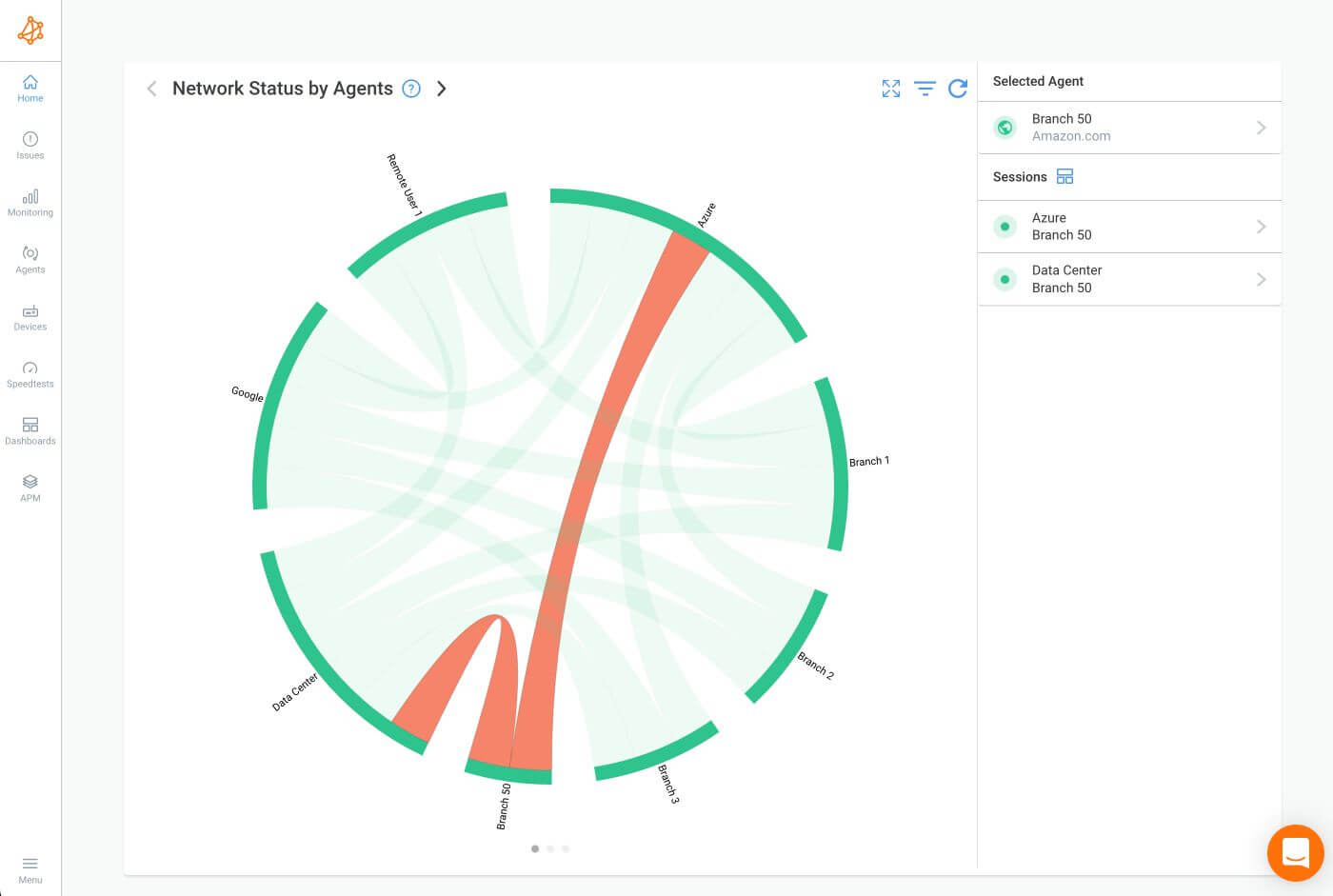
End-user network experience monitoring goes beyond traditional infrastructure-centric monitoring by capturing metrics that directly reflect the user's perspective. It takes into account factors such as application responsiveness, latency, network throughput, and error rates experienced by the end-user. By collecting and analyzing this user-centric data, organizations can better understand the impact of network performance on user productivity, user satisfaction, and business outcomes.

To implement effective end-user network experience monitoring, several key components need to be considered:
- User Experience Data Collection: User experience data is collected through various methods such as active probing, synthetic transactions, or passive monitoring. Active probing involves periodically sending test packets or performing simulated transactions to measure network responsiveness. Synthetic transactions simulate real user interactions to assess application performance. Passive monitoring captures network traffic data in real-time, allowing for a detailed analysis of user interactions.
- Application Performance Monitoring: Application performance monitoring focuses on understanding how applications and services perform from the end-user's perspective. This involves measuring metrics such as application response time, transaction success rates, and resource utilization. By monitoring application performance, organizations can identify bottlenecks, optimize resource allocation, and improve overall user experience.
- Network Performance Monitoring: Network performance monitoring examines the performance of network infrastructure, including routers, switches, firewalls, and network links. It involves collecting metrics such as latency, throughput, packet loss, and jitter. Network performance monitoring provides insights into the quality and reliability of the network connectivity experienced by end-users.
- User Feedback and Surveys: User feedback and surveys play a crucial role in capturing subjective user experiences and satisfaction levels. Organizations can collect feedback through user surveys, interviews, or feedback forms to gain insights into user perceptions, pain points, and suggestions for improvement. This qualitative information complements quantitative monitoring data and helps in understanding the human aspect of the user experience.

Implementing end-user network experience monitoring offers several benefits for organizations:
- Improved User Satisfaction: By monitoring and optimizing the end-user network experience, organizations can deliver a higher level of service and ensure that users have a positive experience when accessing network resources. This leads to increased user satisfaction and loyalty.
- Faster Issue Resolution: User-centric monitoring enables faster identification and resolution of network issues that impact user experience. With real-time insights into the performance of applications and network infrastructure, organizations can proactively address issues before they escalate and minimize downtime.
- Enhanced Productivity: A positive end-user network experience translates to improved productivity. By identifying and addressing performance bottlenecks, organizations can optimize the network environment to support efficient workflows, faster data transfer, and seamless application usage.
- Data-Driven Decision Making: End-user network experience monitoring provides organizations with valuable data and insights to make informed decisions. By analyzing user-centric metrics and feedback, organizations can identify trends, prioritize investments, and align network resources to meet user needs effectively.
By adopting end-user network experience monitoring practices, organizations can prioritize user-centricity in their network operations. This proactive approach leads to enhanced user satisfaction, improved productivity, and better business outcomes. In the following sections, we will explore the implementation process, metrics, and best practices for mastering user-centricity through effective end-user network experience monitoring.
Implementing end-user network experience monitoring requires careful planning, selection of appropriate tools and technologies, and configuring the monitoring infrastructure.

Here are the key steps and best practices for successful implementation:
Before implementing end-user network experience monitoring, it is essential to define clear objectives and establish a plan. Consider the following aspects:
- Identify Key User Groups: Determine the user groups or personas that are critical to the organization's operations. This may include employees, customers, partners, or specific departments. Understanding their network needs and expectations will guide monitoring efforts.
- Define Monitoring Goals: Clearly define the goals and objectives of end-user network experience monitoring. Determine the specific metrics and KPIs that will be tracked to assess user experience. These goals will serve as the foundation for selecting the right monitoring tools and technologies.
- Establish Baseline Performance: Establish a baseline of network performance for comparison purposes. This baseline will help identify deviations from normal behavior and facilitate the proactive detection of potential issues affecting user experience.
Choosing the appropriate network monitoring tools and technologies is crucial for effective end-user network experience monitoring. Consider the following factors:
- User-Centric Monitoring Solutions: Look for monitoring solutions that provide features specifically designed for end-user network experience monitoring. These solutions often include features such as active probing, synthetic transactions, and user experience dashboards.
- Real-Time Monitoring Capabilities: Select tools that offer real-time monitoring capabilities to enable proactive issue detection and resolution. Real-time monitoring ensures that changes in user experience are immediately captured and addressed.
- Scalability and Flexibility: Ensure that the chosen monitoring tools can scale with the organization's network infrastructure and accommodate future growth. Flexibility in terms of integration with existing systems and compatibility with diverse network environments is also important.
Configuring the monitoring infrastructure involves setting up the necessary components to collect, analyze, and report on end-user network experience data. Consider the following steps:
- Define Data Collection Points: Identify the network segments and access points where end-user network experience data will be collected. This may include deploying monitoring agents or sensors strategically across the network infrastructure.
- Data Aggregation and Analysis: Establish mechanisms for aggregating and analyzing the collected data. This may involve centralizing data in a monitoring platform or utilizing distributed analysis tools for real-time insights.
- Visualization and Reporting: Implement a user-friendly interface or dashboard that presents the collected data in a visually understandable manner. The dashboard should provide real-time views of key metrics and facilitate data-driven decision-making.
To ensure a successful implementation of end-user network experience monitoring, consider the following best practices:
- Collaborate with Stakeholders: Involve key stakeholders from IT, network operations, and user-facing teams to gain insights into user requirements and challenges. Collaboration ensures alignment between monitoring efforts and user expectations.
- Continuous Monitoring and Evaluation: Implement continuous monitoring practices to capture ongoing changes in end-user network experience. Regularly evaluate the monitoring data, metrics, and KPIs to ensure they remain relevant and aligned with business goals.
- Integration with Incident Management: Integrate end-user network experience monitoring with incident management processes to enable seamless issue resolution. Establish workflows that trigger notifications and initiate incident response when user experience falls below acceptable thresholds.
- Training and Knowledge Transfer: Provide training and guidance to network administrators and support teams on the use of end-user network experience monitoring tools and data analysis techniques. Foster a culture of continuous learning to ensure optimal utilization of monitoring capabilities.
Implementing end-user network experience monitoring requires a holistic approach that encompasses planning, tool selection, infrastructure configuration, and network monitoring best practices. By implementing these steps effectively, organizations can gain valuable insights into user experience, drive continuous improvement, and achieve mastery in user-centricity.
To effectively monitor and measure the end-user network experience, organizations need to establish relevant metrics and key performance indicators (KPIs). These metrics provide quantitative insights into the quality and performance of the network from the user's perspective. Here are key considerations when selecting metrics and KPIs for user-centric monitoring:
Network performance metrics reflect the technical aspects of the network infrastructure and help assess its capability to deliver a positive end-user experience. Some important network performance metrics to consider include:
- Latency: Latency measures the time it takes for data packets to travel from the source to the destination. Lower latency indicates faster response times and better network performance.
- Throughput: Throughput represents the amount of data that can be transmitted over the network within a given timeframe. Higher throughput signifies a network's ability to handle larger volumes of data, leading to faster data transfer rates.
- Packet Loss: Packet loss measures the percentage of data packets that do not reach their destination. Lower packet loss rates indicate a more reliable network connection.
- Jitter: Jitter refers to the variation in the delay of packet delivery. Lower jitter values indicate a more stable and consistent network connection.
In addition to network performance metrics, organizations should establish KPIs that directly reflect the end-user network experience. These KPIs provide a holistic view of the quality and satisfaction of the user's interactions with the network. Some key KPIs for user-centric monitoring include:
- Application Response Time: Application response time measures the time it takes for an application to respond to a user's request. Lower response times indicate better application performance and a more positive user experience.
- Transaction Success Rate: Transaction success rate measures the percentage of completed transactions without errors or failures. Higher transaction success rates indicate smoother application interactions and a more reliable network.
- Page Load Time: Page load time measures the time it takes for a web page to load fully in the user's browser. Faster page load times enhance user experience, as users can access content more quickly.
- User Satisfaction: User satisfaction can be measured through surveys, ratings, or feedback mechanisms. It provides a subjective assessment of the user's overall satisfaction with the network experience and the services accessed.
Collecting and analyzing KPI data is essential for gaining insights into the end-user network experience. Consider the following practices:
- Real-Time Monitoring: Monitor KPIs in real-time to promptly identify and address any deviations or issues impacting the user experience. Real-time monitoring allows for proactive response and minimizes any negative impact on user satisfaction.
- Historical Analysis: Analyze historical KPI data to identify patterns, trends, and potential areas for improvement. Historical analysis helps in identifying recurring issues, understanding performance fluctuations, and making informed decisions for optimization.
- Correlation Analysis: Correlate KPI data with other metrics and factors that may impact the end-user network experience. This includes correlating network performance metrics with application response times or user location to uncover relationships and prioritize improvement efforts.
The collected metrics and KPIs serve as a foundation for data-driven decision-making. Organizations can leverage these insights to:
- Proactively Address Issues: Monitor metrics and KPIs to identify early warning signs of performance degradation or potential issues that may impact the end-user experience. Promptly address these issues to ensure optimal user satisfaction.
- Optimize Network Performance: Analyze metrics and KPIs to identify areas of improvement and optimize network performance. By addressing bottlenecks, optimizing resources, and fine-tuning configurations, organizations can enhance the end-user network experience.
- Align IT Investments: Use metrics and KPIs to align IT investments with user needs and expectations. Data-driven insights help prioritize investments, determine resource allocation, and guide decision-making for infrastructure enhancements.
By selecting and tracking relevant metrics and KPIs, organizations can gain a comprehensive understanding of the end-user network experience. This data-driven approach enables organizations to monitor performance, identify areas for improvement, and make informed decisions to continuously enhance user satisfaction and achieve mastery in user-centricity.
Analyzing and troubleshooting end-user network issues is a critical aspect of user-centric monitoring. By understanding common network issues and having effective troubleshooting techniques in place, organizations can quickly identify and resolve problems that impact the end-user experience. Here are key considerations for analyzing and troubleshooting end-user network issues:
To effectively troubleshoot network issues, it is important to be familiar with common problems that can affect the end-user experience. Some common network issues include:
Learn how to use synthetic monitoring to monitor network performance & identify network issues, and the benefits of synthetic traffic over packet capture.
Learn more

- Network Congestion: High network traffic and insufficient bandwidth can lead to network congestion, causing slow data transfer, increased latency, and degraded performance.
- Packet Loss: Packet loss can occur due to network errors, congestion, network overload or faulty equipment. It can result in data retransmissions, delays, and reduced application responsiveness.
- Latency Issues: Excessive latency can cause delays in data transmission and result in slow application response times, particularly for interactive and real-time applications like VoIP (ex. VoIP latency).
- Connectivity Problems: Network connectivity issues, such as intermittent connectivity or complete loss of connection, can disrupt the user's ability to access resources and impact productivity. This includes network brownouts and Internet brownouts.
- Security Threats: Security threats, such as malware infections or unauthorized access, can compromise network performance, disrupt services, and compromise the end-user experience.
Learn how to measure network performance with key network metrics like throughput, latency, packet loss, jitter, packet reordering and more!
Learn more

To troubleshoot end-user network issues effectively, organizations must analyze the relevant data collected during monitoring. Consider the following practices:
- Real-Time Monitoring: Utilize real-time monitoring tools and dashboards to identify deviations from normal behavior and promptly address issues. Real-time monitoring allows for proactive troubleshooting and minimizing the impact on end-users.
- Correlation of Data: Correlate end-user network experience data with other relevant metrics, such as network performance data or application-specific data. This correlation can help pinpoint the root cause of issues and prioritize troubleshooting efforts.
- Drill-Down Analysis: Perform detailed analysis by drilling down into specific metrics or user segments to identify patterns or trends. This granular analysis can provide insights into specific areas or user groups experiencing network issues.
- Historical Comparison: Compare current data with historical data to identify changes or anomalies. Analyzing historical trends can help uncover recurring issues and assess the effectiveness of previous troubleshooting actions.
When troubleshooting network performance problems, organizations can utilize various techniques to identify and resolve issues efficiently. Consider the following troubleshooting techniques:
Learn about Network Device Monitoring to easily monitor performance of firewalls, routers & switches to identify problems like high CPU & bandwidth usage.
Learn more

- Network Device Analysis: Examine the performance and configuration of network devices such as routers, switches, and firewalls. Verify that they are operating optimally and are correctly configured to support the desired end-user experience.
- Traffic Analysis: Analyze network traffic patterns to identify potential bottlenecks or areas of high congestion. This can involve examining specific traffic flows, monitoring bandwidth utilization, and identifying sources of excessive traffic.
- Performance Testing: Conduct performance testing to assess the behavior of applications and services under various network conditions. This can help identify performance limitations and determine the impact of network changes or optimizations.
- Collaborative Troubleshooting: Foster collaboration between network administrators, application developers, and support teams to investigate and resolve complex network issues. This interdisciplinary approach allows for a comprehensive understanding of the problem and facilitates faster resolution.
To effectively resolve end-user network issues and restore a positive user experience, organizations should follow these best practices:
- Clear Communication: Maintain clear communication with end-users regarding the status of network issues, estimated resolution times, and any temporary workarounds. Timely and transparent communication helps manage user expectations and minimize frustration.
- Prioritization of Critical Issues: Prioritize troubleshooting efforts based on the impact and urgency of the issue on end-users. Focus on resolving critical issues that significantly hinder productivity or affect a large number of users.
- Documentation and Knowledge Base: Create a documentation and knowledge base that captures troubleshooting procedures, known issues, and successful resolution techniques. This resource can be used for reference and shared among support teams to improve efficiency and consistency in issue resolution.
- Continuous Improvement: Continuously evaluate and improve the troubleshooting process based on feedback and lessons learned. Implement preventive measures to minimize the recurrence of known issues and enhance the overall end-user network experience.
By effectively analyzing and troubleshooting end-user network issues, organizations can minimize disruptions and network disconnections, restore network performance, and ensure a positive user experience. Implementing these practices contributes to mastering user-centricity and maintaining a network environment that meets the needs and expectations of end-users.
Optimizing network performance is crucial for achieving user-centricity and delivering an exceptional end-user network experience. By implementing strategies that prioritize user needs and continuously improving network performance, organizations can enhance user-centricity. Here are key considerations for enhancing user-centricity through network optimization:
To optimize network performance and improve the end-user experience, organizations can adopt the following strategies:
Learn the essential techniques, steps, and tools for network troubleshooting with our ultimate survival guide. Keep your network running smoothly and secure.
Learn more

- Bandwidth Management: Implement bandwidth management techniques to ensure that critical applications and services receive sufficient network resources. This includes prioritizing network traffic, implementing Quality of Service (QoS) policies, and bandwidth allocation based on user needs.
- Network Segmentation: Divide the network into segments or virtual LANs (VLANs) to isolate and control network traffic. Network segmentation enhances security, minimizes congestion, and improves overall network performance for end-users.
- Traffic Optimization: Utilize traffic optimization techniques such as caching, compression, and content delivery networks (CDNs) to reduce latency, enhance data transfer speeds, and improve application performance.
- Load Balancing: Implement load balancing mechanisms to distribute network traffic across multiple servers or paths. Load balancing ensures optimal resource utilization, prevents congestion, and improves overall network reliability.
Implementing Quality of Service (QoS) mechanisms is essential for prioritizing network traffic for sensitive applications and ensuring a positive end-user experience. Specific aspects, like QoS for VoIP are especially helpful for user-centric applications like VoIP. Consider the following aspects of QoS implementation:
Unlock the power of Quality of Service (QoS) in networking. Dive into prioritization, bandwidth prioritization & why QoS is your network's vigilant ally.
Learn more

- Service Level Agreements (SLAs): Define SLAs that specify the expected quality of the network experience for different user groups or applications. SLAs provide guidelines for network performance and help align network operations with user expectations.
- Traffic Prioritization: Assign appropriate priority levels to different types of network traffic based on their criticality to user experience. This ensures that essential applications receive preferential treatment in terms of bandwidth allocation and network resources.
- Network Resource Reservation: Utilize resource reservation techniques, such as bandwidth reservation or admission control, to guarantee a certain level of network performance for specific applications or user groups.
- QoS Monitoring and Adjustment: Use QoS Monitoring Tools to continuously monitor and analyze QoS metrics to assess the effectiveness of QoS policies and make necessary adjustments. Regularly evaluate performance against SLAs and refine QoS parameters to meet evolving user requirements.
When designing network architecture with a focus on user-centricity, organizations should consider the following principles:
- Redundancy and High Availability: Implement redundant network components, multiple paths, and failover mechanisms to minimize downtime and ensure high network availability. Redundancy helps maintain uninterrupted network connectivity and reduces the impact of failures on end-users.
- Scalability and Flexibility: Design the network infrastructure to be scalable and adaptable to accommodate growth and changing user needs. This includes employing modular architectures, virtualization, and cloud-based services that provide flexibility and agility.
- Network Segmentation and Access Control: Segment the network to isolate traffic and enforce access control based on user roles and requirements. Network segmentation enhances security, improves performance, and allows for granular control over user access and permissions.
- User-Centric Application Design: Collaborate with application developers and stakeholders to ensure that applications are designed with user-centricity in mind. This includes optimizing application performance, minimizing network dependencies, and providing intuitive user interfaces.
Achieving user-centricity in network operations requires a culture of continuous improvement and ongoing network optimization efforts. Consider the following practices:
- Regular Performance Monitoring: Continuously monitor network performance, collect relevant metrics, and track user satisfaction to identify areas for improvement. Regular monitoring helps in detecting performance degradation, understanding network usage patterns, and proactively optimizing network resources.
- Performance Analysis and Reporting: Analyze performance data and generate reports to gain insights into network performance trends, areas of improvement, and adherence to SLAs. Use these reports to guide decision-making and prioritize optimization efforts.
- Collaboration and Feedback: Foster collaboration between network teams, application developers, and end-users to gather feedback, understand pain points, and address user needs effectively. User feedback provides valuable insights for network optimization and aligning network operations with user expectations.
- Evolving Technologies and Trends: Stay informed about emerging technologies, industry trends, and best practices in network optimization. Regularly assess the relevance and effectiveness of existing network solutions and explore new technologies that can enhance user-centricity.
By implementing optimization strategies, prioritizing QoS, considering design considerations, and embracing continuous improvement, organizations can continually enhance the end-user network experience. These practices promote user-centricity, drive productivity, and position organizations to deliver exceptional network performance that aligns with user expectations.

The landscape of end-user network experience monitoring is constantly evolving, driven by advancements in technology and the increasing demand for a seamless user experience. Looking ahead, several trends and developments are shaping the future of user-centric monitoring:
Advancements in technology are paving the way for innovative approaches to end-user network experience monitoring. Some emerging technologies that hold promise for the future include:
- Artificial Intelligence (AI) and Machine Learning (ML): AI and ML algorithms can analyze vast amounts of network data, identify patterns, and predict network performance issues. These technologies enable proactive management, anomaly detection, and automated troubleshooting, enhancing the accuracy and efficiency of user-centric monitoring.
- Internet of Things (IoT): The proliferation of IoT devices introduces new complexities in network monitoring. User-centric monitoring will need to adapt to the increasing number of connected devices and the unique requirements of IoT applications, ensuring optimal performance and reliability.
- Edge Computing: Edge computing brings data processing and analysis closer to the source, reducing latency and enhancing user experience. User-centric monitoring will need to account for distributed edge environments, ensuring real-time insights and responsive management at the network edge.
- Software-Defined Networking (SDN): SDN allows for dynamic network configuration and management. User-centric monitoring will leverage SDN capabilities to provide granular control over network traffic, prioritize user-specific requirements, and adapt to changing user needs on-demand.
Artificial intelligence and machine learning technologies are poised to play a significant role in the future of end-user network experience monitoring. AI and ML algorithms can enable the following advancements:
- Predictive Analytics: AI-powered predictive analytics can anticipate potential network performance issues, allowing proactive measures to be taken before they impact the end-user experience. Predictive analytics enable organizations to address problems in real-time and minimize disruptions.
- Automated Root Cause Analysis: ML algorithms can analyze vast amounts of network data to identify the root cause of performance issues. By automating root cause analysis, organizations can rapidly diagnose problems and initiate timely resolutions, reducing downtime and minimizing the impact on end-users.
- Intelligent Network Optimization: AI-driven insights can guide network optimization efforts, identifying areas for improvement and recommending changes that enhance the end-user experience. These intelligent recommendations help organizations make data-driven decisions for efficient network resource allocation and configuration.
The future of end-user network experience monitoring will increasingly focus on proactive management and optimization. Predictive analytics capabilities will enable organizations to anticipate network issues, optimize performance, and deliver exceptional user-centric experiences. Key aspects of predictive analytics include:
- Real-Time Data Analysis: By continuously analyzing real-time data from various sources, predictive analytics can identify patterns, trends, and anomalies that may impact the end-user experience. Real-time insights empower organizations to address issues before they become critical.
- Capacity Planning and Resource Allocation: Predictive analytics can forecast future network demands and assist in network capacity planning. By accurately predicting resource requirements, organizations can ensure optimal network performance, avoid bottlenecks, and scale infrastructure to meet growing user needs.
- Proactive Performance Optimization: Predictive analytics can guide proactive performance optimization efforts by identifying areas of improvement and recommending specific actions. This enables organizations to continuously enhance the end-user experience, optimize network resources, and align with user expectations.
While the future of end-user network experience monitoring holds immense potential, it also presents challenges and opportunities. Some anticipated challenges include:
- Data Privacy and Security: As monitoring technologies gather more user-centric data, ensuring data privacy and security will be of paramount importance. Organizations must implement robust security measures and adhere to privacy regulations to maintain user trust.
- Integration of Diverse Technologies: The integration of emerging technologies such as AI, ML, IoT, and SDN into existing network environments can pose integration challenges. Organizations will need to ensure seamless interoperability and effective integration of these technologies for holistic user-centric monitoring.
- Skillset Requirements: The adoption of advanced monitoring technologies may require organizations to develop new skillsets within their IT teams. Training and upskilling personnel in areas such as data analytics, AI, and network automation will be crucial for leveraging these technologies effectively.
Despite the challenges, the future of end-user network experience monitoring presents numerous opportunities. Organizations that embrace user-centric monitoring, leverage emerging technologies, and prioritize continuous improvement will gain a competitive edge, enhance customer satisfaction, and drive innovation in the evolving digital landscape.
As organizations navigate the future, mastering user-centricity in network monitoring will remain a strategic imperative, enabling them to deliver exceptional end-user experiences and stay ahead in an increasingly connected and demanding world.
Explore real use cases of how Obkio revolutionizes SMB network monitoring, enhancing efficiency, and delivering top-notch user experiences.
Learn more

User-centricity in network monitoring has become a critical focus, requiring organizations to shift their perspective from infrastructure-centric approaches to prioritizing the needs and expectations of end-users.
Through end-user network experience monitoring, organizations can gain valuable insights into the quality of network connectivity, application performance, and overall user satisfaction. By selecting and tracking relevant metrics and key performance indicators (KPIs), organizations can measure, analyze, and optimize the end-user experience effectively.
Implementing user-centric monitoring practices involves planning, selecting appropriate tools, configuring monitoring infrastructure, and adopting best practices for analysis and troubleshooting. By continually optimizing network performance, organizations can ensure a positive user experience, improve productivity, and drive business success.

The future of end-user network experience monitoring holds great promise, fueled by emerging technologies such as artificial intelligence, machine learning, IoT, and edge computing. These advancements enable proactive management, predictive analytics, and intelligent optimization, further enhancing user-centricity and delivering seamless network experiences.
As organizations embrace the future of network monitoring, it is crucial to prioritize data privacy, security, and the integration of diverse technologies. By navigating these challenges and capitalizing on opportunities, organizations can position themselves as leaders in user-centric network monitoring, driving customer satisfaction, loyalty, and business growth.
In conclusion, mastering user-centricity through end-user network experience monitoring is a strategic imperative. By continuously monitoring, analyzing, and optimizing network performance from the user's perspective, organizations can create a network environment that exceeds user expectations, fosters productivity, and fuels success in the digital age.
Put It to the Test: Trying Is the Ultimate Way to Learn!
Networks may be complex. But Obkio makes network monitoring easy. Monitor, measure, pinpoint, troubleshoot, and solve network problems.
- 14-day free trial of all premium features
- Deploy in just 10 minutes
- Monitor performance in all key network locations
- Measure real-time network metrics
- Identify and troubleshoot live network problems


























 Obkio Blog
Obkio Blog




